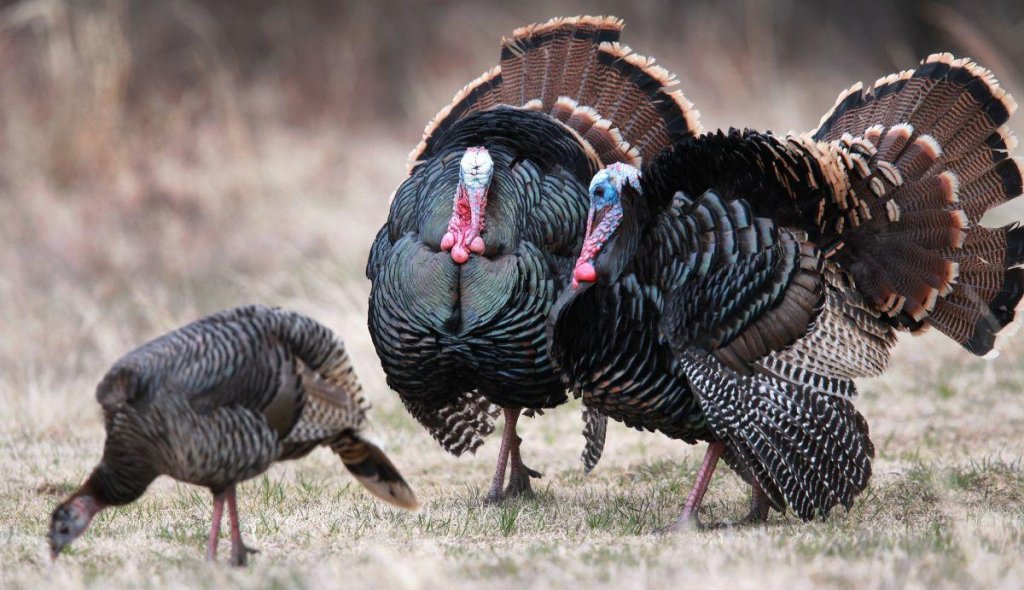When we’re out in the woods during turkey season, it’s not strange to see a hen turkey giving a young male turkey called Jake turkey. You might wonder why this happens. Well, it turns out there are some interesting reasons behind it.
Understanding these behaviors can make us better hunters and help us appreciate the turkeys more. Turkeys have their way of doing things. Hens, the lady turkeys, sometimes act in ways that might seem problematic to us. Jakes, on the other hand, are the younger ones.
So, let’s get to know more about turkeys and the secrets behind their behavior.
Behavioural Aspect of Turkeys

1. Turkey Behavior – Hens vs. Jakes
Understanding the behavior of turkeys, particularly the difference between hens and Jake turkeys is important for successful hunting. Hens are the mature female turkeys responsible for selecting their mating partners. They show a selective nature, carefully choosing the most suitable male for reproduction. On the other hand, jakes are young male turkeys, often in their first year.
2. Spring Hunt – Jakes and Hens
Spring is a crucial season for turkey hunting, as it marks the time when turkeys are most active. During this period, hunters frequently encounter many jakes and hens. This dynamic adds an interesting layer of complexity to the hunting experience. Jakes, being young and full of energy, may respond differently to calls compared to older, more seasoned toms.
3. Too Many Jakes – Hunting Challenge
The abundance of jakes in a hunting area can present a unique challenge for hunters. These young male turkeys, easily recognizable by their shorter beards and less developed spurs, are known for their curiosity and often interesting nature. While this can make them more likely to respond to calls, it can also make them easily spooked. It requires a fine approach to navigate this scenario and successfully lure in a turkey.
4. Calls and Turkey Responses
Turkey’s calling is an essential aspect of successful hunting. Different calls mimic various turkey sounds, from hen yelps to gobbles, and understanding how these resonate with turkeys is crucial. However, their response patterns may vary in the presence of many jakes. Some jakes may eagerly react to calls, displaying curiosity and interest. Others, however, might approach with caution or even show interest.
5. Gobbling Times and Behavior
Turkeys are known for their distinct behaviors, particularly during mating season. Male turkeys, known as toms, are especially vocal and engage in gobbling to attract hens. Understanding the timing of these behaviors is crucial for hunters. Typically, early mornings and late afternoons are when turkeys are most active and responsive to calls.
6. Habitat and Turkey Season
The habitat plays an important role in shaping turkey behavior and population dynamics. A suitable habitat provides turkeys with essential resources like food, water, and safe nesting areas. This abundance of resources directly influences turkey populations, affecting the number of young hens and jakes present. Favorable habitat conditions can lead to an increase in hens entering the breeding population early.
7. Young Hens in Mating Season
In most years, young hens, equal to teenagers in the turkey species, are not significant players in the mating game. They are still in physical development, focusing their energy on building body condition rather than reproduction. However, these year-old hens may enter the breeding population early under exceptional circumstances, such as when habitat conditions are exceptionally favorable.
8. Year-Old Gobblers (Jakes)
The year-old gobblers, commonly called jakes, represent a unique aspect of the turkey population. These teenage turkeys, having recently transitioned into adulthood, possess unique characteristics. They are characterized by shorter beards and less developed spurs, differentiating them from mature toms. In their youthful energy, snakes tend to show behaviors similar to teenage humans.
9. Handling Adolescent Gobblers
Handling adolescent gobblers, or jakes, during the spring turkey season requires a unique approach. These young turkeys, while not the primary target for most hunters seeking trophy toms, are ordinary. When encountered, Jake may display a mix of curiosity and recklessness, making them more likely to respond to calls. While they may lack the mature characteristics of full-grown toms, they can still provide an engaging hunting experience.
10. Late Afternoon Turkey Hunt
Late afternoon presents a favorable window of opportunity for turkey hunting. As the day progresses, hens that have already been bred begin to scatter from the flocks. Many are occupied with searching for suitable nesting sites or in the early stages of laying eggs. This transition leaves gobblers with fewer available hens and a heightened receptiveness to pursue new mates.
Conclusion
So, that’s why sometimes a hen turkey might shoo away the young turkey called Jake. Hens like to choose mature turkeys for mates, not the young ones. The young turkeys, or jakes, are full of energy and curiosity but don’t have the experience yet. This can happen a lot during the spring when turkeys are most active.
When there are too many jakes around, it can make hunting a problem. They can be easily scared but might also be curious about calls. Understanding their behavior is important for a successful hunt. Knowing all these things can help you be a better turkey hunter.
So, next time you’re out hunting turkeys in the spring, you’ll better understand why things are happening the way they are.

